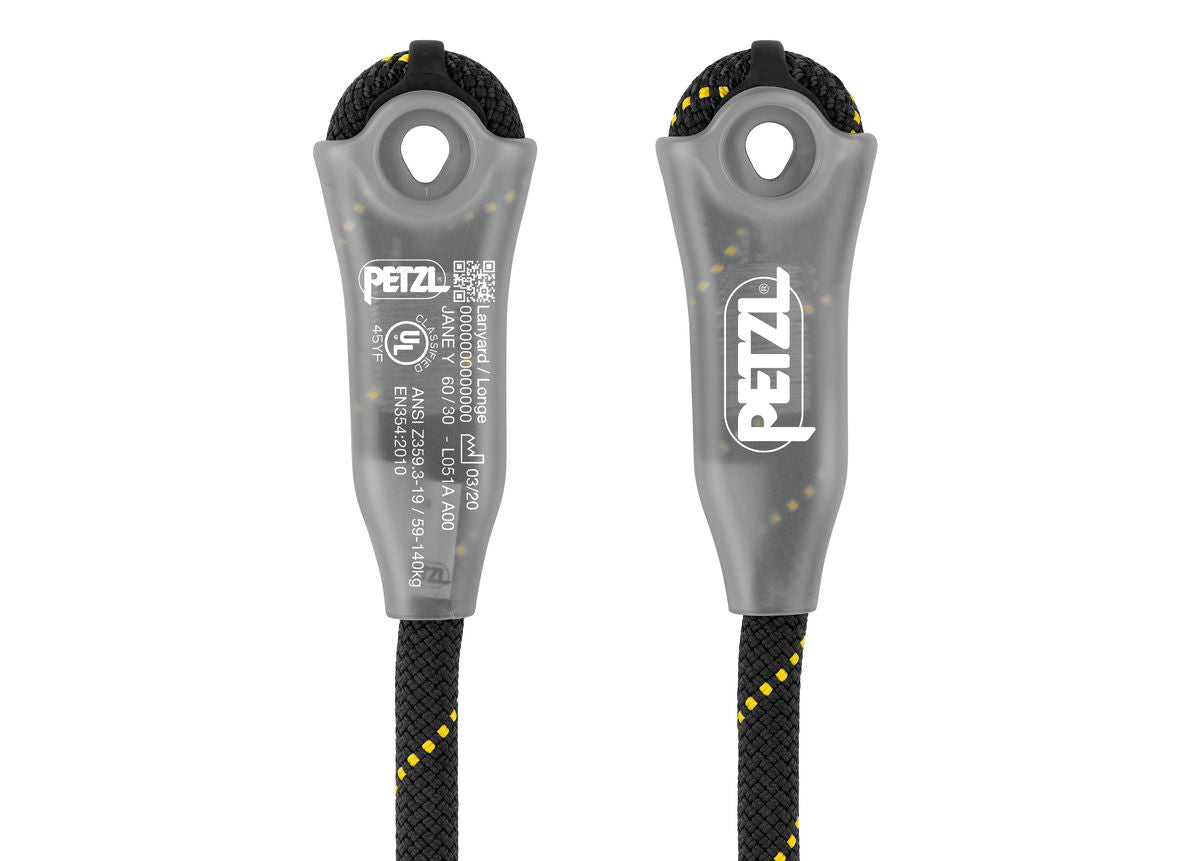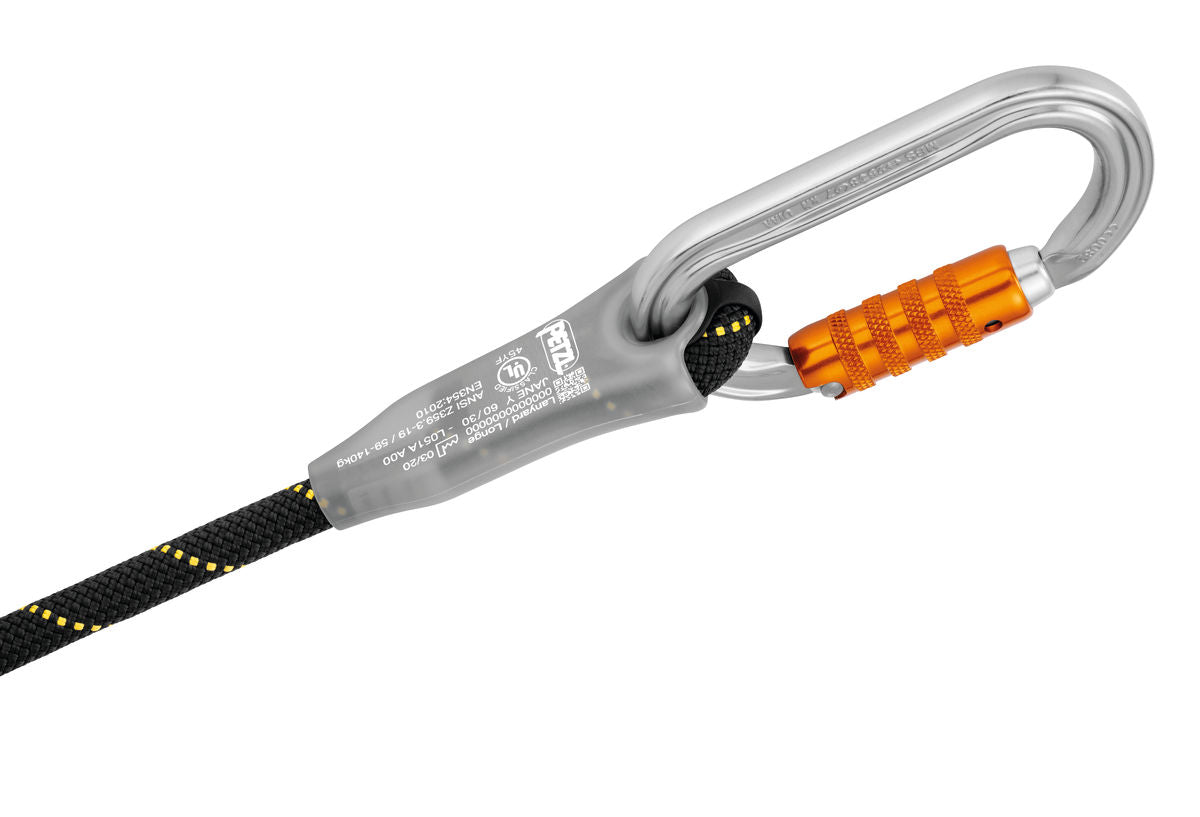The Petzl Jane - Y is an outstanding double progression lanyard that ensures continuous connection during rope ascents. Its unique plastic sheaths serve multiple purposes. They hold the carabiners firmly in place, making it incredibly easy to clip them on. At the same time, they offer excellent protection to the terminations against abrasion. The lanyard features a 60 - cm long arm, perfect for attaching an ASCENSION handled rope clamp, and a 30 - cm short arm, which is ideal for clipping in when passing intermediate anchors. Thanks to the sewn terminations, it's a breeze to handle. The STUART accessory enables direct attachment to the gated ventral attachment point of ASTRO harnesses. Each plastic sheath has an individual identification marking, allowing you to track the equipment throughout its lifespan. It's a dynamic rope lanyard that helps limit the impact on the user in case of a short fall. However, keep in mind that progression lanyards don't have energy absorbers, so they should only be used when the fall factor is less than 1, such as below the ASCENSION handled rope clamp or anchor point. Specifications include a weight of 130 g, certifications of CE EN 354, ANSI Z359.3, EAC, and it's made of polyester.


Using the Petzl Jane - Y double progression lanyard is straightforward. First, attach the long 60 - cm arm to an ASCENSION handled rope clamp. When you need to pass intermediate anchors, use the 30 - cm short arm to clip in. The plastic sheaths on the lanyard make it easy to handle the carabiners. Just slide the carabiner into the sheath, and it will stay in place. If you're using an ASTRO harness, you can use the STUART accessory to directly attach the lanyard to the gated ventral attachment point. Remember, this lanyard doesn't have energy absorbers. So, only use it when the fall factor is less than 1, which means using it below the ASCENSION handled rope clamp or anchor point. For maintenance, keep it clean and dry. Avoid exposing it to sharp objects or chemicals that could damage the polyester material. Check the lanyard regularly for any signs of wear and tear, like frayed ropes or damaged plastic sheaths. If you notice any issues, it's best to replace the lanyard to ensure your safety.










